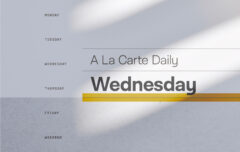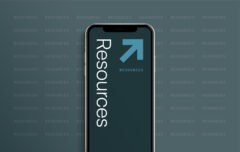A couple of weeks ago I spoke at a Families & Technology seminar in Auburn Hills, Michigan, and enjoyed the opportunity to spend some time focusing on how technology is changing the world and perhaps even changing the Christian faith. I was surprised during my research to see just how much technology has changed, well, everything! I gave two talks and thought I’d share my introduction to these seminars. In the days to come I may spend a bit more time reflecting on technology and the Christian life. I’d love to get some thoughts from you on what topics related to technology, media and Christian living may be of interest to you.
In the meantime, here is something to get us started…
In his account of the Lewis and Clark expedition, historian Stephen Ambrose notes “A critical fact in the world of 1801 was that nothing moved faster than the speed of a horse. No human being, no manufactured item, no bushel of wheat…no letter, no information, no idea, order, or instruction of any kind moved faster. Nothing ever had moved any faster.” For all the benefits and greatness of American society it was “a society whose technology was barely advanced over that of the Greeks. The Americans of 1801 had more gadgets, better weapons, a superior knowledge of geography, and other advantages over the ancients, but they could not move goods or themselves or information by land or water any faster than had the Greeks or Romans.” Though they lived 1800 years after Jesus, they could make their way across America no faster than Jesus had made his way across ancient Palestine.
A radical transformation was afoot.
Beginning in the middle part of the 19th century the steam engine forever transformed travel. For the first time in human history, people could move faster than the horse. The “iron horse,” as the locomotive was known, began to tirelessly take people across the nation far faster than a horse could run. Even the first locomotives were capable of running at twenty or twenty five miles per hour. While the United States boasted only 40 miles of rails in 1830, just ten years later it had increased to almost 3,000 miles and, ten years after that, it was narrowing in on 10,000 miles. By the end of the century America well over 160,000 miles of rails, and this in a nation that is 3,000 miles across. Goods, people and information could now move at unprecedented speeds, but information was about to catapult further ahead.
In 1844, Samuel Morse, using a telegraph, famously sent the words, “What hath God wrought” through 37 miles of cable stretching from the Old Supreme Court Chamber in the Capitol in Washington to Mt. Clare Depot in Baltimore. As he did so, he inadvertently kicked off the Information Age. Within two decades, almost all of America was wired and cables stretched across the Atlantic ocean, linking whole continents. India was connected by 1870 and Australia by 1872. Families, friends, nations, continents were bound together in a completely new way. It changed everything.
After thousands of years of near stasis–all of human history to that point–the world very suddenly became radically smaller. Military commanders who once had to send orders by horse could now communicate instantly with troops a continent away. Local newspapers that had once written of little more than local news with occasional bits of stale national news, were able to report on international events almost as they happened. It is little wonder that Associated Press was founded just four years after Morse sent his telegram. The speed of transformation is breathtaking. In the span of a century the horse, once the mainstay of both transportation and information, was reduced to a form of entertainment. The world was never the same again.
Incredibly, I think we could safely and rationally argue that this transformation was minor compared to the digital revolution we are in the midst of today.










